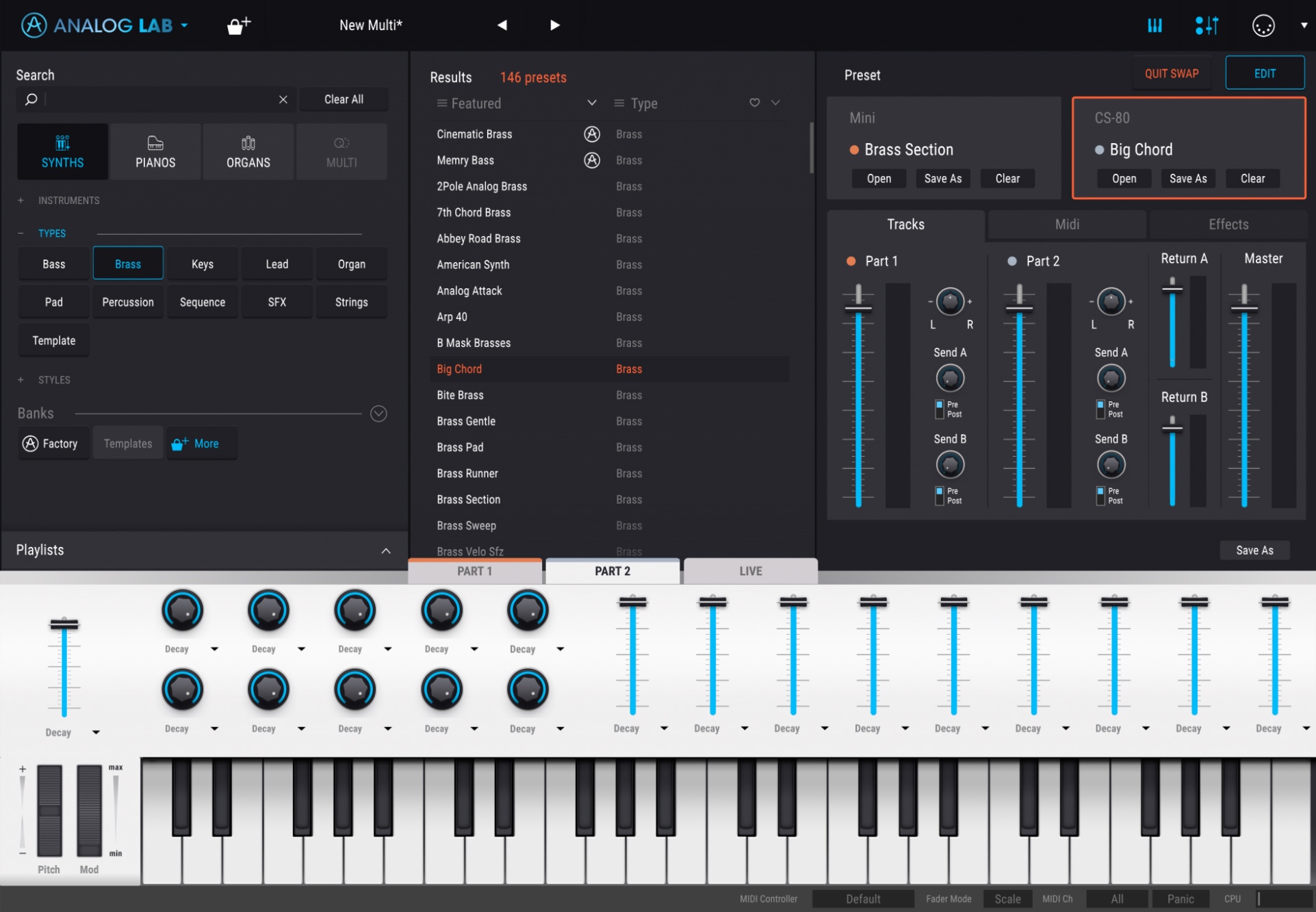
- Arturia analog lab how to#
- Arturia analog lab install#
- Arturia analog lab update#
- Arturia analog lab pro#
Since a lot of music software (and many creative products in general) aren’t designed with accessibility in mind, there aren’t many best practices to pull from. The most challenging part of getting the software accessible for visually impaired users, according to Pfister, wasn’t necessarily implementation or programming - it was figuring out how best to communicate with the system’s text-to-speech. But he added that "the layout of the keyboard is very well thought out, so it makes learning where everything is very easy." Since Dasent is familiar with Arturia's devices, he has the layout of buttons and dials memorized. Now, when he tweaks faders and encoders on the keyboard, "I can know exactly what the values are as I tweak the parameters." As he turns a knob on the controller to scroll through a list of instruments, a voice reads out the name of each item he lands on. "Basically, as I press a button on Keylab, or I turn a dial or change a value, it sends notifications out to the system voice, allowing me to know exactly what's on the keyboard," Dasent said in a video describing the update. With this new accessibility mode, the company's Keylab controllers now communicate with the Analog Lab software and a computer's text-to-speech engine. It also brings various “ergonomic improvements and bug fixes.” The company is announcing a new accessibility mode to Analog Lab V, which will enable all users to turn on auditory feedback and screen reading.
Arturia analog lab update#
That kicked off a months-long back-and-forth between Dasent, Pfister and the Arturia team as they worked on the prototype, culminating in the launch of a new update today. “It’s as if my eyes are now open,” Dasent gushed.

“I have something to show you.” What Pfister then shared with Dasent was an early version of a new accessibility toolset in Analog Lab V.

Two months later, Dasent said, he got a call from Pfister. “I had no choice but to just stick with the presets,” he added.

He couldn’t tweak cutoffs, envelopes, parameters or adjust the brightness. It was a tedious and expensive process, he said, but even after that he could only choose presets.
Arturia analog lab pro#
For between $500 and $1,000, this person would export the presets to a format that would work in Avid’s Pro Tools, which had the accessibility features Dasent needed. “I would have to hire someone to come in for maybe three days to save these presets,” he said. It was cheaper than spending hundreds of thousands on actual synths, he told himself.īut because Arturia’s preset manager Analog Lab wasn’t built to accommodate the visually impaired at the time, Dasent had to drop even more cash.

“I pretty much couldn’t do anything.” He had spent some $500 on Arturia’s V Collection 5, a set of virtual instruments that included recreations of some vintage synths he wanted to use. “At that point I couldn’t browse and use the software,” he said.
Arturia analog lab how to#
To learn how to recover an activation from your account, please refer to the How to register and activate my product FAQ article.įor any other questions regarding the ASC, please check the following articles: Note: If you don't have any activation left, you will have to go on My Arturia to get back your activation from your "last device". If you own an M1 computer, please proceed with the following steps.įirst of all, remember to download the latest version of the software products you own from Arturia's website, in order to benefit from the latest compatibility features, and in order to run them on your machine.įrom there, your computer will be identified as a different device, and you'll have to activate your products again in the ASC.
Arturia analog lab install#
Note: You will be asked to install Rosetta when installing the new ASC. The ASC is now M1-native and can run smoothly in both M1 and Rosetta mode.


 0 kommentar(er)
0 kommentar(er)
